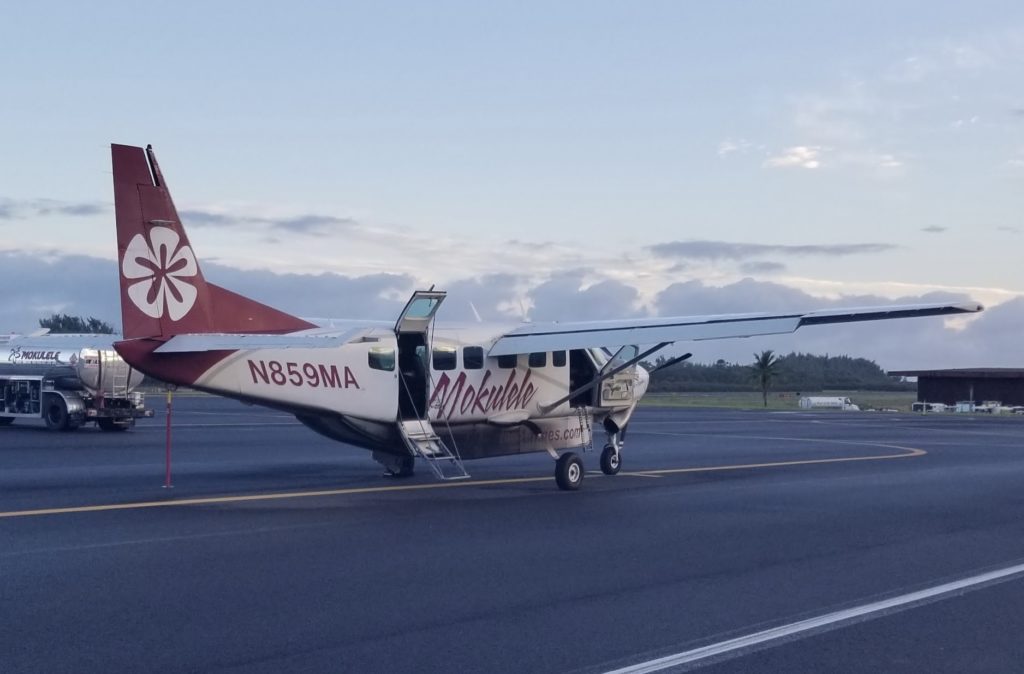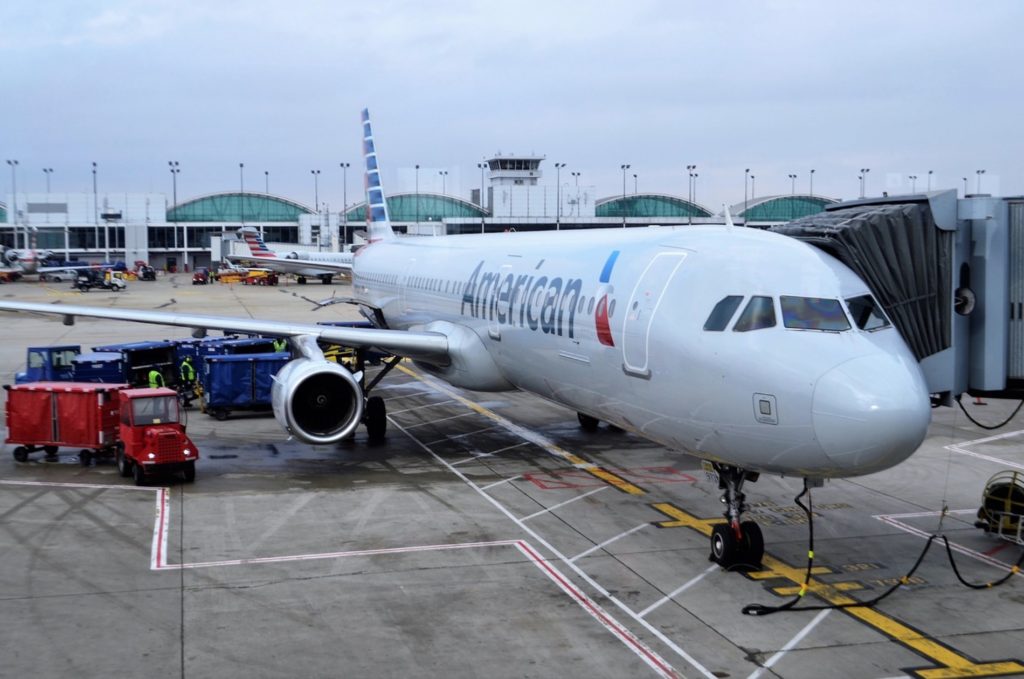Recently I was flying a smaller airline and when I checked in, the gate agent asked me something that I have not often been asked when flying. The agent asked me (and my son) what our weight was. While the answer to the question of why airlines weigh passengers may seem obvious to some people, I thought it was worth exploring some of the relationship between flying and total passenger weight. As you might expect, the answer to why some airlines weigh passengers all is due to how airlines calculate weight and balance. Depending on the size of the plane, individual passengers’ weight may or may not make a difference.

Why Do Airlines Weigh Passengers?
Flying an airplane is a complicated endeavor. It may be easy to forget in an age of large jumbo jets, but all aircraft are affected by thrust, drag, lift, and weight. When I was flying short flights on Mokulele Airlines in between various Hawaiian islands, I was flying in a Cessna 208 small plane (pictured above). A Cessna 208 has an empty weight of 4,730 pounds and a maximum takeoff weight of 8,000 pounds. So Mokulele wants to make sure that the total weight of pilots, crew, passengers and baggage is not above the maximum takeoff weight. I also saw the gate agent weighing all of the cargo, checked bags and carryons. My son and I only had backpacks with us – those were not weighed, but I imagine they were probably accounted for in the system.
Besides the total weight, airlines flying light weight planes like a Cessna 208 also have to account for balance between the front and back and left and right of an airplane. Remember, the forces affecting flight are complicated and can be easily thrown out of whack. Imagine if all of the heaviest passengers sat on one side, or all in the front or back of the aircraft? For that reason, on my Mokulele Airlines flight at least, you don’t actually get a boarding pass or seat assignment when you check in. Instead, once everybody has checked in, the gate agent brings everyone to the gate and tells everyone where they need to sit. This is done to ensure everything is in accordance with the weight and balance needs of the aircraft.
Average Airline Passenger Weight
As you can imagine, the way how airlines calculate passenger weight is going to vary widely depending on the size of the aircraft. It’s obviously going to be much more critical to get everyone’s weight when you are flying a small Cessna 150 than when you are flying a Boeing 737-700 that weighs 10 times as much. In the grand scheme of things, individual passengers’ weight just isn’t as relevant when the actual airplane weighs so much more.
That’s not to say that it doesn’t matter at ALL. There is a weight limit for flights – all flights – it’s just that when you are flying larger aircraft, it’s all handled behind the scenes without the need to weigh individual passengers or most carryon baggage. Instead, airlines use an average airline weight per passenger and multiply it by the total number of passengers. Currently the FAA average weight per passenger is 190 pounds in the summer and 195 pounds in the winter for men, and 179 pounds in the summer and 184 pounds in the winter for women.

A few years ago I was flying Southwest Airlines from Cincinnati to Chicago on an early morning flight that was nearly empty. I sat down in my aisle seat towards the front of the aircraft. Since I was traveling by myself, there was no need to save seats on Southwest Airlines and I buckled up to get ready for the flight. A bit later, a flight attendant came up to me and asked if I could move a few rows back. She said anywhere behind Row 11 would be fine. I understood that it was a weight and balance thing, but I was a little nervous that me moving 2 rows back was going to make the difference between the plane operating safely and us all dying in a horrible crash :-). But it’s just one example that goes to show that most if not all airlines have calculations built into their automatic systems that ensure that the aircraft is safe from an overall weight and balance perspective.
Empty Commercial Airplane Weights
Here are some commercial airplane weights to give you an idea of the perspective, if you want to know how much a commercial airplane weighs.
- Cessna 150 weight – The Cessna 150 weighs 985.5 lbs
- Cessna 208 weight – A Cessna 208 weighs 4,730 pounds
- Boeing 737 weight – the Boeing 737-700 weighs 84,100 lbs
- Boeing 747 weight – the Boeing 747-400 weighs 404,600 lbs
- Airbus A320 weight – an Airbus A320 weighs 87,100 lbs
- Airbus A321 weight – an Airbus A321 weighs 106,900 lbs
- Boeing 787 weight – A Boeing 787-10 weighs 298,700 lbs with a maximum takeoff weight of 560,000 lbs
- Airbus A380 weight – An Airbus A380 weighs 1,265,000 pounds
There is a fairly wide range of commercial airplane weight, even among different types of the same aircraft family.
Are There Airline Weight Limits For Passengers?
As you might imagine, commercial airlines take the concept of passenger weight very seriously. Most commercial airlines operating in the United States do not have any specific weight limits for passengers. That means that as of now, there are no American Airlines weight limits for passengers, Delta Air Lines weight limit for passengers or weight limits for most commercial airlines. With that said, most airlines do have policies in place for passengers of size. So if you are wondering how much you have to weigh to buy two plane tickets, you will want to contact the airline that you are flying to understand their specific policy.
When Will Airlines Start Weighing Passengers?
The FAA average passenger weight determination was last in the news back in 2021, when they raised the FAA average passenger weight determination to the amount listed above, 190 pounds in the summer and 195 pounds in the winter for men, and 179 pounds in the summer and 184 pounds in the winter for women. That led to speculation that airlines would start weighing passengers. After all, the updates to the FAA average passenger weight meant that airlines might have to limit the number of seats that they could sell. And if they couldn’t sell the seats, would they remove the unneeded seats? Or start weighing passengers to get under the FAA’s weight limits? However, to date, nothing has come of this and most major commercial airlines in the United States do not weigh their passengers. The FAA average passenger weight for 2023 is the same as the FAA average passenger weight for 2022, which is the same as the FAA average passenger weight for 2021.
The Bottom Line
There are many factors that affect how an aircraft flies. The FAA has specific calculations for how much weight any particular aircraft can carry. Because of this, some airlines do weigh passengers if they are flying smaller aircraft, such as Cessnas or other propeller planes. In the United States, no major airlines that fly larger jets currently weigh passengers. Instead, they use the FAA average passenger weight determination to determine the number of passengers that they can safely carry.
Have you ever been weighed as part of an airline check-in process? Leave your experience and thoughts in the comments
This site is part of an affiliate sales network and receives compensation for sending traffic to partner sites, such as thepointsguy.com. This may impact how and where links appear on this site. Responses are not provided or commissioned by the bank advertiser. Some or all of the card offers that appear on the website are from advertisers and that compensation may impact on how and where card products appear on the site. Any opinions expressed in this post are my own, and have not been reviewed, approved, or endorsed by my advertising partners and I do not include all card companies, or all available card offers. Terms apply to American Express benefits and offers and other offers and benefits listed on this page. Enrollment may be required for select American Express benefits and offers. Visit americanexpress.com to learn more. Other links on this page may also pay me a commission - as always, thanks for your support if you use them


 Dan Miller travels with his wife and 6 (SIX!) children. He loves to help families travel for free / cheap, especially larger families. If you are looking for help, drop him an email at
Dan Miller travels with his wife and 6 (SIX!) children. He loves to help families travel for free / cheap, especially larger families. If you are looking for help, drop him an email at 
User Generated Content Disclosure: Points With a Crew encourages constructive discussions, comments, and questions. Responses are not provided by or commissioned by any bank advertisers. These responses have not been reviewed, approved, or endorsed by the bank advertiser. It is not the responsibility of the bank advertiser to respond to comments.